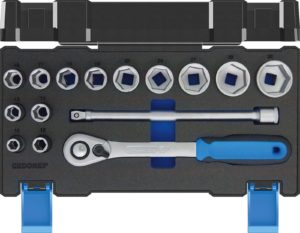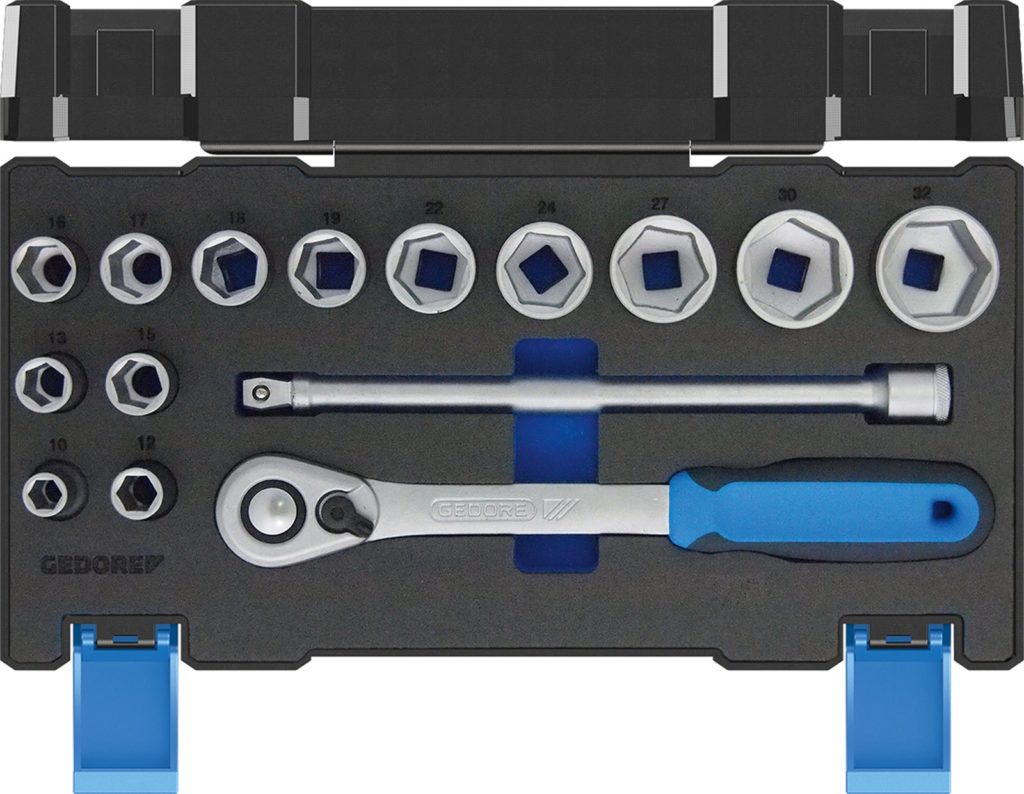
If you have spent time working in mechanics or maintenance, chances are you’ve used a socket wrench. Socket wrenches can be both manual and electric and are made up of two parts: a ratchet and a socket. The ratchet is the part of the socket wrench that has a piece of gear inside it which allows the wrench to turn in one way, but locks when turned in the opposite direction. All ratchets have small square nubs that allow for different sized sockets to be popped on and off the wrench. The great thing about socket wrenches is that they are very adaptable – no matter the type of bolt shape, there is probably a socket to match it. Here’s a list of the different socket sets you can find.

Hex sockets
A “hex” socket is a socket that is used for six sided bolts, hence the name hexagonal. There are two types of this socket – six point and twelve point. The six point hex socket has six angles (points) conected around to create a perfect hexagon. The twelve point socket has duble the amount of angles, which allows the socket to fit in two different ways over a six sided bolt, making it easier to place the socket over the bolt. Out of the two types, the twelve point socket is more practical as it can fit the bolt easier, which is great for when working in tight spaces.
Impact sockets
The first noticeable difference between impact sockets and regular sockets is their colour. This is due to the industrial finish that impact sockets have, as they are built to be more durable and high-stress resistant. These types of socket sets are designed to be used by power tools as they have a strong inner rotating hammer that applies more force and vibration to help remove fasteners quickly. Impact sockets have much thicker walls and are made with a non-corrosive finish to compensate for the extra vibration.
Spark plug sockets
As their name suggests, spark plug sockets are designed for removing or fitting spark plugs into an engine. The main thing that sets them apart from standard sockets is that these types of sockets are much longer. They can also be found with a protective rubber insert that makes sure the spark plug doesn’t damage the wrench when working. They can be used manually by hand and also by power tools.
Pass through sockets
Pass through sockets are used when you have a bolt with an especially long shaft. They have a pass through hole in them, much like a hollow tube and because of this design they can be used on any bolt without lenght becoming an issue. To be able to use a pass through socket, you need a ratchet that clamps around the socket, rather than attaching it to the square nub on the ratchet head, as is the case with the previusly mentioned sockets.














